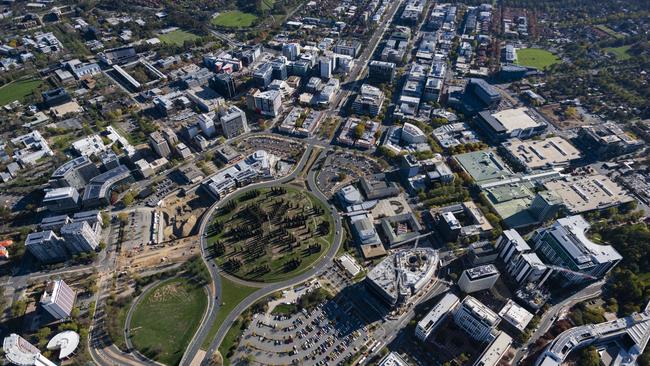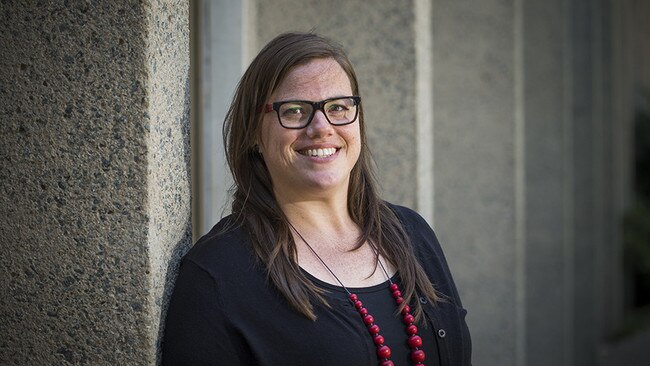Census 2021: ACT leads Australia in population growth
A demography expert has called for a rethink of Canberra’s planning strategy to tackle its “image problem” as Census figures reveal it’s the fastest growing state or territory in the nation. Find out why.
Canberra Star
Don't miss out on the headlines from Canberra Star. Followed categories will be added to My News.
The 2021 Census has revealed the ACT is the fastest growing state or territory in the country.
Between the 2016 and 2021 Census the ACT’s population grew from 397,000 to 454,000 usual residents, meaning the population increased by 57,000 in only five years.
In a statement Chief Minister Andrew Barr said the Census data revealed there was 21,000 more people living in Canberra than the last published estimated resident population for the ACT.
Demographer Dr Liz Allen from the Australian National University told the Canberra Star the ACT has “notoriously” had an issue with under reporting and underestimating its population and population growth.
“There’s a high churn of people moving into the ACT for employment that may have roots in other states in territories which they maintain,” Dr Allen said.
“So they might not update their driver’s licence or Medicare card — particularly among young adults travelling for education or their first major job.

“The ACT has long had this issue with data discrepancies, not because the methodology is wrong but because people aren’t updating their details to reflect that they now live in the ACT.”
Dr Allen said these data discrepancies have serious and wide-reaching impacts for the ACT.
“Population data is used to inform the calculation of GST allocation and to determine the political representation we have in federal parliament.
“It has serious financial and representation implications for the ACT.”
Mr Barr, who previously criticised the former Scott Morrison Liberal government’s infrastructure funding for Canberra, said following the release of Census population data the ACT Government was in talks with the Albanese Labor Government to “ensure that the ACT gets our fair share”.
“We have many shared priorities in housing, healthcare and education that will support the growth of the nation’s capital into the future,” Mr Barr said.
“Now is the time to invest in our city, in infrastructure that is built for Canberra, to ensure that the Canberra of 2030 continues to be one of the most liveable cities in the world.”

Dr Allen said amid the release of the Census data, the ACT needs to reconsider its planning and development strategy to encourage people to live in Canberra long term.
“The ACT has a bit of an image problem,” she said.
“Perhaps (Canberra) is not as competitive with the likes of Melbourne or Sydney so the opportunities for education, employment and social networks are greater outside of the ACT.
“The ACT struggles to attract and retain people, particularly young people and people in the peak working ages.
“(The territory) needs to ensure there are economic upsides and opportunities that are unique to the ACT.”
Dr Allen said the nation’s capital should seek to be less reliant on employment in the Australian Public Service and related industries.
“The ACT is perfectly positioned to promote itself as a global tech hub, or arts hub,” she said.
“We have the land potential, the intellectual potential for a little San Francisco or a little Silicon Valley within the ACT.
“It’s only our vision that is preventing us from making that happen.”

Another issue Dr Allen raised was the ACTs planning strategies, particularly the development of car-reliant suburbs on the outskirts of Canberra, the underdevelopment of public transport, and the resistance against new development in established suburbs.
“The ACT suffers from its population size not because its too big but because of the economics of scale,” she said.
“When it comes to public transport the argument that is often stated is we don’t have the population to support a viable public transport network in our suburbs.
“We also tend to see the building of homes before the building of essential services.
“(Canberra has) satellite outposts of people without the necessary services like shops.
“(People living in those areas) are becoming even more car dependent in order to buy their groceries.
“ACT Planning should consider it’s no good to just build homes, you need to build networks to thrive.
“The ACT also suffers from a bit of a nimby problem so any efforts to do major infill in (older inner suburbs) is being met with locals who don’t want to see the landscape change.
“That’s not conducive to a functioning and vibrant city.”




